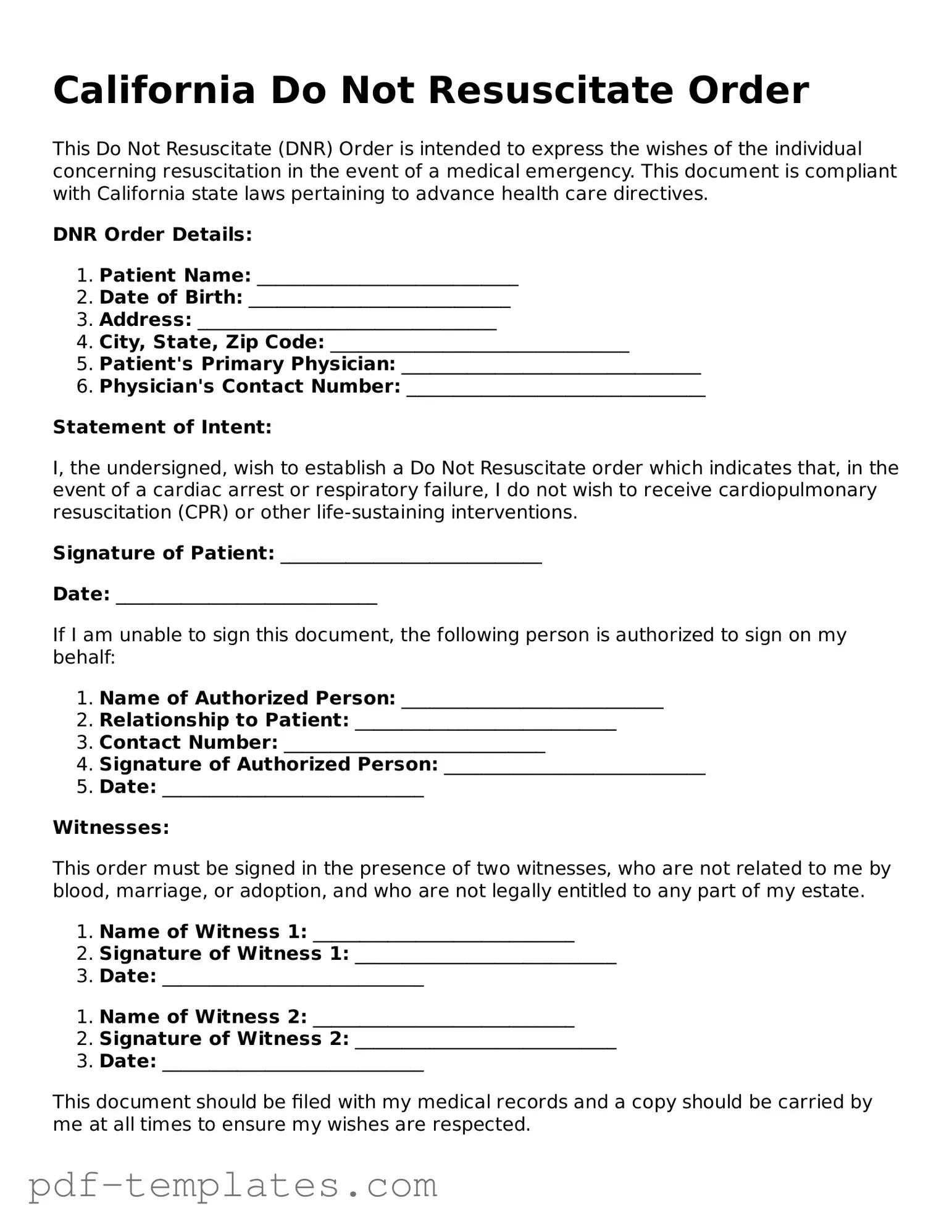The Advance Healthcare Directive is a legal document that allows individuals to outline their preferences for medical treatment in the event they become unable to communicate their wishes. Similar to the California Do Not Resuscitate Order, it empowers individuals to make choices about their healthcare. This directive can include preferences regarding life-sustaining treatments, pain management, and organ donation. By designating a healthcare agent, individuals ensure that their medical decisions align with their values and desires, much like how a DNR specifies the desire not to receive resuscitation efforts.
The Physician Orders for Life-Sustaining Treatment (POLST) form is another document that shares similarities with the Do Not Resuscitate Order. POLST is designed for individuals with serious illnesses or advanced age who wish to convey their treatment preferences in a more detailed manner. This form goes beyond resuscitation preferences to include decisions about intubation, antibiotics, and other life-sustaining measures. Like the DNR, POLST is a medical order signed by a physician, making it actionable in emergency situations.
The USCIS I-864 form, which is essential in ensuring that immigrants receive the necessary financial support from their sponsors, aligns with various legal documents designed to protect individual rights and preferences in critical situations. For more information about the USCIS I-864 form, you can visit https://documentonline.org/blank-uscis-i-864.
The Living Will serves as a counterpart to the Do Not Resuscitate Order by outlining an individual’s wishes regarding end-of-life care. While the DNR focuses specifically on resuscitation efforts, the Living Will addresses broader medical treatment preferences. This document typically includes instructions about the use of life support and other interventions in situations where recovery is unlikely. Both documents aim to ensure that healthcare providers respect the patient’s wishes, even when the patient cannot voice them.
The Medical Power of Attorney (MPOA) is a legal document that grants a designated person the authority to make healthcare decisions on behalf of an individual. This document is similar to the Do Not Resuscitate Order in that it ensures the individual’s wishes are respected. While a DNR specifies a desire to avoid resuscitation, an MPOA can encompass a wider range of medical decisions. The agent appointed in the MPOA can advocate for the patient’s preferences, including those outlined in a DNR, ensuring a comprehensive approach to healthcare decisions.
The Do Not Intubate (DNI) order is closely related to the Do Not Resuscitate Order, but it specifically addresses the use of intubation during medical emergencies. While a DNR indicates that a patient does not wish to receive cardiopulmonary resuscitation, a DNI specifies that the patient does not want to be placed on a ventilator. Both documents reflect a patient’s preferences regarding life-sustaining interventions, and they work in tandem to provide clear guidance to healthcare providers about the individual’s wishes in critical situations.
